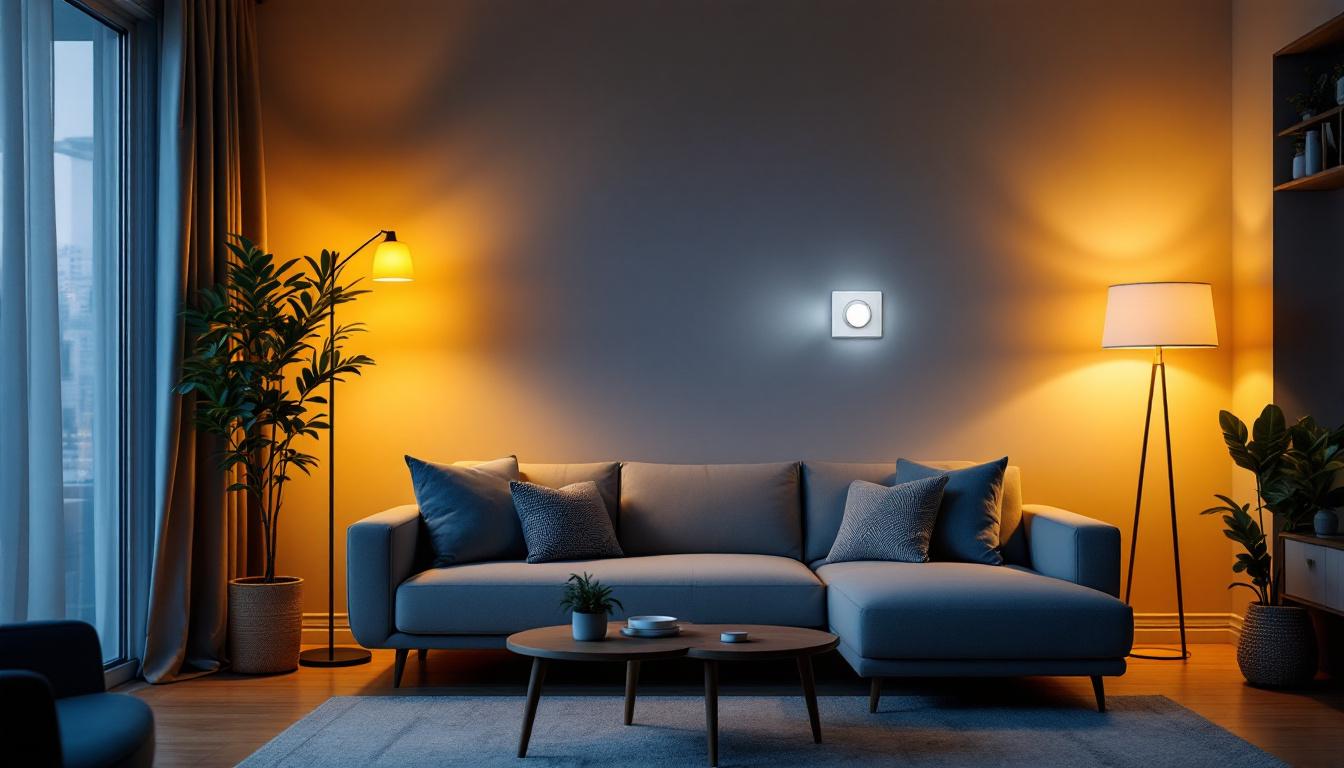
Light Emitting Diodes (LEDs) have revolutionized the lighting industry, offering energy efficiency, longevity, and versatility. However, when it comes to dimming LED lights, not all dimmer switches are created equal. For lighting contractors, understanding the nuances of LED dimming is critical to ensure optimal performance and customer satisfaction.
Traditional incandescent bulbs dim smoothly because their filament’s brightness changes proportionally with voltage. In contrast, LEDs operate on low-voltage direct current and rely on complex driver electronics. This fundamental difference means that many conventional dimmer switches designed for incandescent or halogen bulbs may not function properly with LED fixtures.
LEDs are semiconductor devices that emit light when an electric current passes through them. Unlike incandescent bulbs, which simply reduce brightness by lowering voltage, LEDs require current regulation through their drivers. These drivers convert incoming AC power to the DC power needed by the LED chip.
When dimming, the driver must be capable of interpreting the dimmer’s signal and adjusting the LED’s output accordingly. Using a non-compatible dimmer can cause flickering, buzzing, reduced dimming range, or even damage to the LED fixture. Therefore, selecting the correct dimmer switch designed specifically for LED lighting is essential.
Moreover, the market has seen a surge in LED-compatible dimmer switches that utilize advanced technologies such as trailing-edge or leading-edge dimming. Trailing-edge dimmers tend to be more compatible with LED fixtures, providing smoother dimming capabilities and minimizing the risk of flickering. These dimmers work by cutting off the trailing edge of the AC waveform, allowing for more precise control over the current supplied to the LED. This technology not only enhances the user experience but also extends the lifespan of the LED lights, making it a worthwhile investment for homeowners and contractors alike.
Another important aspect to consider is the wattage rating of both the LED fixture and the dimmer switch. Many dimmers have a minimum load requirement, and if the total wattage of the LED lights falls below this threshold, the dimmer may not function correctly. This mismatch can lead to performance issues, including erratic dimming behavior. Therefore, lighting professionals should always check the specifications of both the LEDs and the dimmer switches to ensure they are compatible and can work harmoniously together, providing the desired lighting effects without any drawbacks.
Lighting contractors should be familiar with the various dimmer technologies available and their compatibility with LED lighting systems. The two primary types of dimmers are leading-edge and trailing-edge dimmers, each with distinct characteristics.
Leading-edge dimmers, traditionally used for incandescent bulbs, cut the beginning of the AC waveform to reduce power. While some LED drivers can handle leading-edge dimming, many cannot, leading to issues such as flickering or limited dimming range. These dimmers are generally less expensive but less compatible with modern LED technology. Additionally, the use of leading-edge dimmers can sometimes result in a noticeable hum or buzz, especially at lower dimming levels, which can be distracting in quiet environments. For contractors, it’s crucial to educate clients about these potential drawbacks when considering this type of dimmer for their LED installations.
Trailing-edge dimmers cut the end of the AC waveform and are designed to work with electronic low-voltage transformers and LED drivers. They provide smoother dimming, reduced noise, and better compatibility with LEDs. For contractors, specifying trailing-edge dimmers when working with LED installations is often the safest choice to ensure performance and reliability. Furthermore, these dimmers typically offer a wider dimming range, allowing for more precise control over lighting levels, which can enhance the ambiance of a space. This feature is particularly beneficial in settings like restaurants or theaters, where mood lighting is essential. As LED technology continues to evolve, trailing-edge dimmers are likely to remain the preferred option for modern lighting solutions.
With the rise of smart home technology, digital dimmers that communicate via protocols like Zigbee, Z-Wave, or Wi-Fi have become popular. These dimmers often offer advanced features such as scene setting, remote control, and integration with home automation systems. However, compatibility with LED fixtures must still be verified, as not all smart dimmers support all LED drivers. In addition to convenience, smart dimmers can also contribute to energy savings by allowing users to schedule lighting based on their routines or adjust settings remotely. This capability not only enhances user experience but also promotes energy efficiency, aligning with the growing trend towards sustainable living. As the market for smart home devices expands, contractors should stay informed about the latest products and their specifications to provide clients with the best options for their unique lighting needs.
Proper installation and specification of dimmer switches for LED lighting require a detailed understanding of both the dimmer and the LED fixture. Several factors must be considered to avoid common pitfalls.
Manufacturers typically specify whether an LED fixture is dimmable and which dimmer types are compatible. Lighting contractors should always review product datasheets and technical specifications before installation. Using a non-dimmable LED with a dimmer switch can cause damage or poor performance.
Dimmer switches have minimum and maximum load ratings. LEDs consume significantly less power than incandescent bulbs, which can result in the load being below the dimmer’s minimum threshold. This mismatch can cause flickering or failure to dim. Contractors should select dimmers designed for low-wattage LED loads and ensure the total load falls within the dimmer’s specified range.
Proper wiring is essential to ensure dimmer switches function correctly. Contractors should verify that the dimmer is installed in the correct location within the circuit, and that neutral wires are connected if required by the dimmer design. Additionally, grounding and compliance with local electrical codes are vital for safety and performance.
Choosing the appropriate dimmer switch for LED lights offers several advantages that directly impact the quality of the lighting installation and client satisfaction.
Dimming LED lights reduces power consumption, which translates into energy savings. Proper dimmer compatibility ensures that energy is not wasted through inefficiencies such as flickering or buzzing. Over time, these savings can be significant, especially in commercial or large-scale installations.
Dimmer switches allow for precise control over light levels, enabling customized ambiance for different settings. Whether it’s creating a cozy atmosphere in a residential living room or adjusting brightness in a conference room, smooth dimming enhances the user experience.
LEDs operated at lower power levels through dimming typically experience less thermal stress, which can prolong their lifespan. Using compatible dimmers ensures that the LED drivers and chips are not subjected to erratic power conditions that could shorten their operational life.
Despite careful planning, contractors may encounter issues during or after installation. Understanding common problems and their solutions is essential for efficient troubleshooting.
Flickering is often caused by incompatibility between the dimmer and LED driver or by insufficient load on the dimmer. Buzzing noises usually stem from the dimmer’s internal electronics struggling with the LED load. Solutions include replacing the dimmer with an LED-compatible model or adding dummy loads to meet minimum load requirements.
Some LED fixtures may not dim smoothly to very low light levels, resulting in abrupt cutoffs or uneven brightness. This can be due to the LED driver’s design or dimmer characteristics. Selecting high-quality dimmable LEDs and compatible dimmers can mitigate this issue.
When integrating LED dimmers with smart home platforms, compatibility issues can arise. Not all smart dimmers support every LED fixture or driver. Contractors should verify compatibility through manufacturer resources and conduct thorough testing before finalizing installations.
The lighting industry continues to evolve rapidly, with innovations aimed at improving dimming performance and integration.
Modern LED drivers are becoming more sophisticated, offering wider dimming ranges, better compatibility with various dimmer types, and improved power factor correction. These advancements simplify installation and enhance user experience.
The Internet of Things (IoT) is driving the development of intelligent lighting systems that offer dynamic dimming, color tuning, and automation. Contractors will increasingly encounter installations requiring seamless integration between LED dimmers and smart control hubs.
As LED dimming technology matures, industry standards and certifications are emerging to ensure interoperability and quality. Familiarity with these standards helps contractors specify compliant products and maintain high installation standards.
For lighting contractors, the ability to correctly specify and install dimmer switches compatible with LED lighting is a critical skill. It directly impacts the functionality, efficiency, and longevity of lighting systems, as well as client satisfaction.
Understanding the technical differences between LED and traditional lighting, selecting appropriate dimmer types, adhering to load requirements, and anticipating potential challenges are essential steps in successful LED dimming installations. As LED technology and smart lighting systems continue to advance, staying informed and adaptable will ensure contractors deliver high-quality, future-proof lighting solutions.
Ready to elevate your lighting installations with the right LED dimmer switches? Look no further than LumenWholesale for all your lighting needs. We provide contractors with the highest quality, spec-grade lighting products at unbeatable wholesale prices. Our extensive selection is designed to meet the highest industry standards, ensuring you get reliable and high-performance lighting for every project. Plus, with free shipping on bulk orders, you can enjoy premium lighting solutions at the best value — without hidden fees or compromises. Make your next project shine with the perfect blend of quality, affordability, and convenience. Visit LumenWholesale today for Wholesale Lighting at the Best Value.

Discover expert tips and insights in our comprehensive guide to selecting the perfect LED wall sconces for any project.

Discover essential insights for lighting contractors on selecting and installing Ballast 4 Lamp T8 systems.

Discover how elegant pendant lighting can transform your space while promoting energy efficiency.

Discover how replacement parts for lighting fixtures can transform your installation projects.